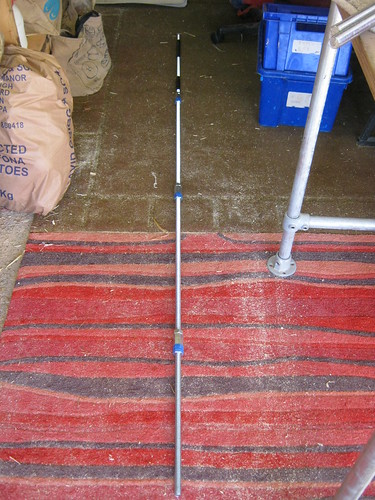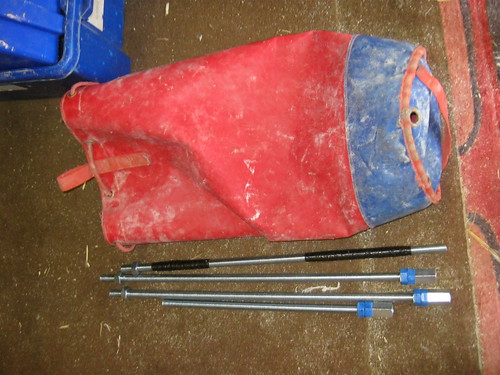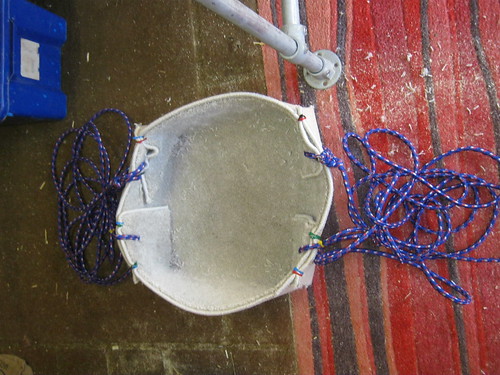Well I've gone with the threaded rod option (M16): Bits from Ebay / Screwfix. Total cost about ?25 but that's provided enough spare bits to make a second. Probably could have come up with something cheaper if I'd looked harder...
I've cut 3 lengths of rod to 60 cm (perfect tackle sack length) and used an off cut at 40 cm for the poking end. Given the thread on the poking end will inevitably get knackered I wanted that section to be identifiable. A different length was an obvious option.
Total length is obviously 220 cm, though leaving out one section to give a rod length of 160 cm looks very usable and is quite a bit lighter / more manoeuvrable.
I've found the rod connector alone doesn't work - additional nuts on both sides are needed to lock the sections. Without these the rod sections started to come loose when I did some test poking in the garage. One side of the connector I've tighten with vice / big spanner and then taped (to make it clear which side it is) as a permanent fitting. The other can be nipped up against this with a small adjustable down the cave. Then a good smattering of duck tape on the first section where it will be held to make it more comfortable to hold.
Just need to find some loose boulders now to see it if it works. I'll report back.
If you've read any of the Portland digging reports, then you've probably seen reference to carpet drag trays. Having made another today I thought I'd photograph it as well. The carpet tiles are x-sample tiles from a local carpet shop. If you catch them on a good day they're free, otherwise they seem to be 50p each. They are surprisingly robust - we've not killed one yet, though the first I made around 9 months ago is now looking a bit sorry for itself. They are flexible so find their way around corners / though constriction better than something rigid.




